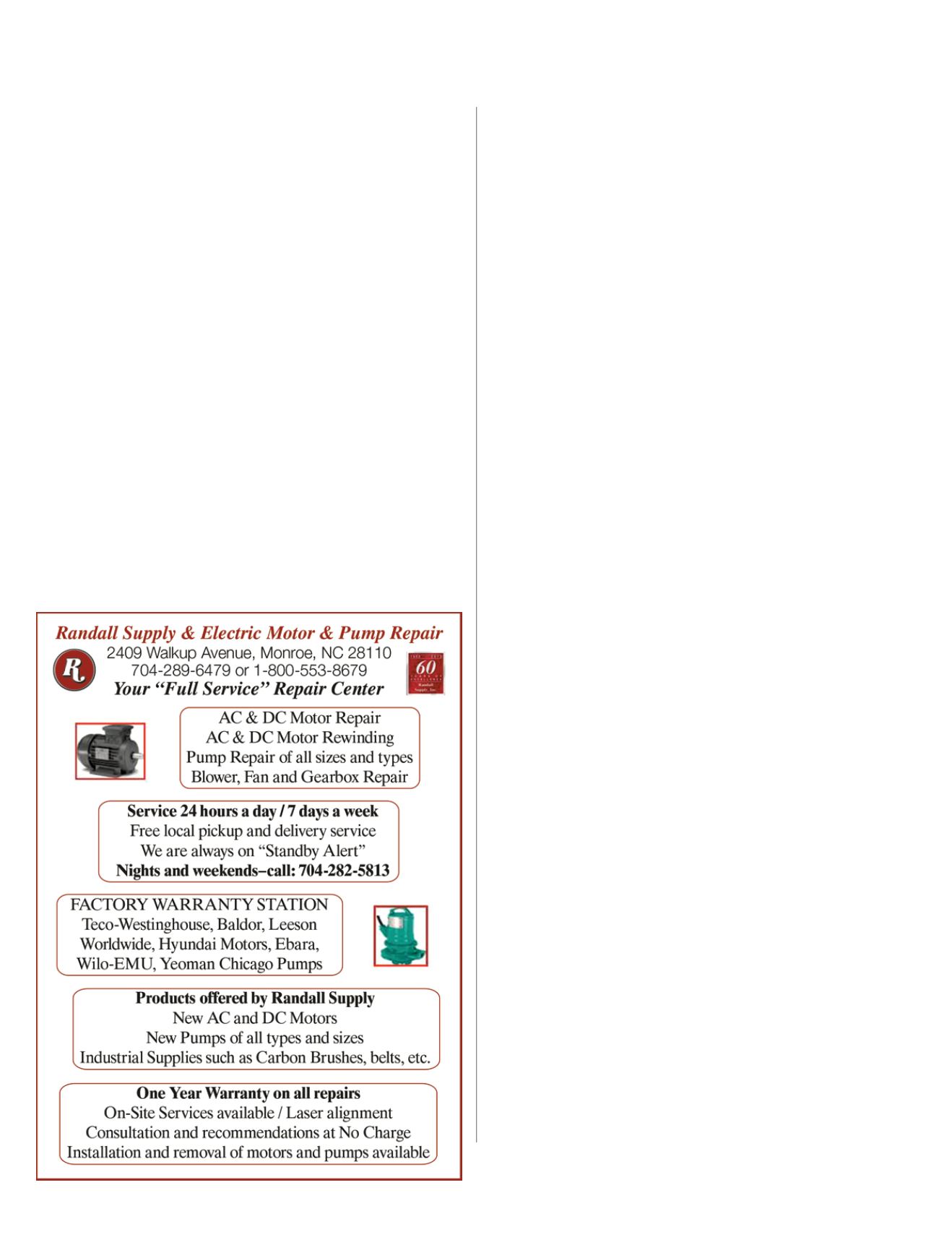

8
NCRWA.COM|
Fall 2015
Some couplings can attach to two pipes of differing diameters and
materials which comes in handy when the exact material of the pipe
or its diameter are not known in advance.
3. KEEP A CLOSE EYE ON THE CREW
Supervisors need to keep a close eye on workers who will be tired
from working a full day and prone to making mistakes. Supervisors
should patrol their work area to see how workers are doing, and
offer food and drink on a regular basis. Flaggers in particular should
be checked as they play a critical role in making sure night time
operations are safe.
Crews want to make the repair and then get some rest before having
to get up and do it all over again. A lack of rest or sleep accumulates
over time. It’s important that crews are not run down to the point
where they become exhausted and unable to perform. Provide them
with the proper tools and repair parts to get the job done.
4. KEEP THE WORK AREA LIT AND CLEAR
In the interests of saving time, sometimes workers will use the
lights of the backhoe to do this job without auxiliary lighting and a
generator. These lights will not supply enough illumination for the
work site and compromise safety.
Use floodlights to illuminate any equipment crossings, and other
areas where crew members will be working. Flaggers in particular
should be well lit to ensure their own safety, and the safety of the
work zone. If drivers can’t see the flagger, his or her ability to slow
down, divert, or stop traffic is hindered.
Floodlights can also blind drivers entering a work zone. Once lights
are set, a worker should drive through the area to observe the lights’
positioning and make adjustments as necessary. The use of self-
righting work lights are a great way to provide light without causing it
to shine in motorists’ eyes. Keep the work area also clear of obstacles,
tools, and equipment.
The use of rotating or flashing amber lights on service vehicles is
necessary and required by law in most states, however, these lights
can be their own hazard. They can be very bright and blind drivers
who are traveling the roadways and prevent safe driving. Wherever
possible, direct these lights so drivers can see properly as they drive
through and ensure worker safety.
5. MANAGE TRAFFIC
If possible, close the roadway where the repairs are taking place and
direct traffic away. If you can’t close the roadway, place warning
signs or lights in a way that will give motorists more time to react and
slowdown before reaching the work area. Ensure that your signs are
clean and have good reflectivity.
Make the work zone as large as possible to give employees more of
a buffer and to keep them safe. After the repair is completed and the
roadway re-opened, do several drive-throughs to make sure that the
road is clear and the road repair is safe for the public’s use.
6. NOTIFY THE PUBLIC
Make every effort to contact law enforcement, fire and rescue
services, emergency dispatch centers, and the general public about
the night time operation. Notify the above organizations, and local
radio and television stations, in advance by sending a concise email
and following up by phone. Include information about where the
repair is taking place, why it’s happening, and any roads that will
be closed off. These agencies and media outlets will appreciate the
information, and keep the community aware of the repair.
About the Author
Doug Riseden is the Technical Support Manager for Krausz
USA, and has worked in the public utility field for over 20 years.
His extensive experience with water and wastewater repairs
and operations includes working for municipalities and private
contractors, and providing water services to the NATO-led security
mission in Afghanistan as part of Operation Enduring Freedom.
















